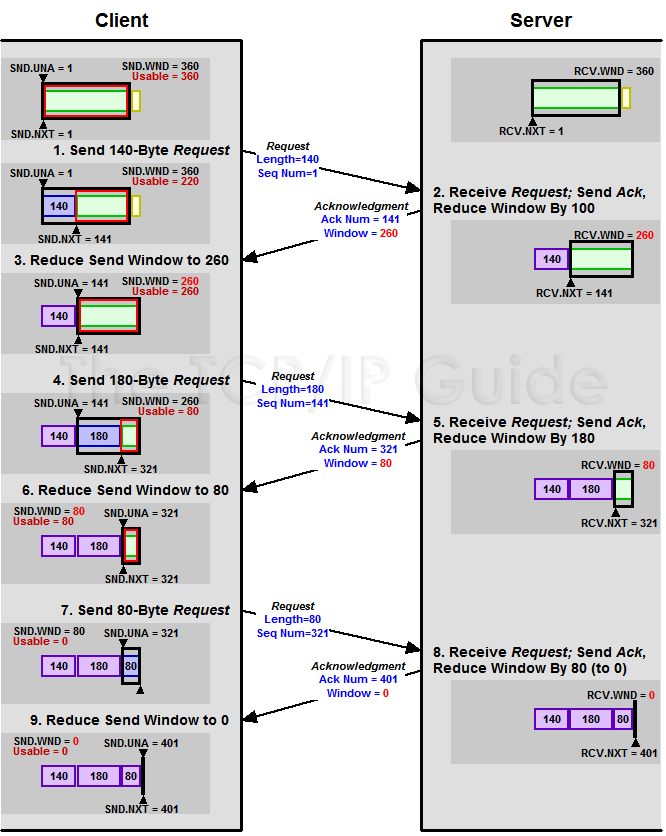 |
|
Please Whitelist This Site?
I know everyone hates ads. But please understand that I am providing premium content for free that takes hundreds of hours of time to research and write. I don't want to go to a pay-only model like some sites, but when more and more people block ads, I end up working for free. And I have a family to support, just like you. :)
If you like The TCP/IP Guide, please consider the download version. It's priced very economically and you can read all of it in a convenient format without ads.
If you want to use this site for free, I'd be grateful if you could add the site to the whitelist for Adblock. To do so, just open the Adblock menu and select "Disable on tcpipguide.com". Or go to the Tools menu and select "Adblock Plus Preferences...". Then click "Add Filter..." at the bottom, and add this string: "@@||tcpipguide.com^$document". Then just click OK.
Thanks for your understanding!
Sincerely, Charles Kozierok
Author and Publisher, The TCP/IP Guide
|
|
|

Custom Search
|
|
TCP Window Size Adjustment and Flow Control
(Page 2 of 4)
Reducing Send Window Size To Reduce The Rate Data Is Sent
Let's go back to our earlier example so I can hopefully explain better what I mean, but let’s make a few changes. First, to keep things simple, let’s just look at the transmissions made from the client to the server, not the server’s replies (other than acknowledgments)—this is illustrated in Figure 222. As before, the client sends 140 bytes to the server. After sending the 140 bytes, the client has 220 bytes remaining in its usable window—360 in the send window less the 140 bytes it just sent.
Sometime later, the server receives the 140 bytes and puts them in the buffer. Now, in an “ideal world”, the 140 bytes go into the buffer, are acknowledged and immediately removed from the buffer. Another way of thinking of this is that the buffer is of “infinite size” and can hold as much as the client can send. The buffer's free space remains 360 bytes in size, so the same window size can be advertised back to the client. This was the “simplification” in the previous example.
As long as the server can process the data as fast as it comes in, it will keep the window size at 360 bytes. The client, upon receipt of the acknowledgment of 140 bytes and the same window size it had before, “slides” the full 360-byte window 140 bytes to the right. Since there are now 0 unacknowledged bytes, the client can now once again send 360 bytes of data. These correspond to the 220 bytes that were formerly in the usable window, plus 140 new bytes for the ones that were just acknowledged.
In the “real world”, however, that server might be dealing with dozens, hundreds or even thousands of TCP connections. The TCP might not be able to process the data immediately. Alternately, it is possible the application itself might not be ready for the 140 bytes for whatever reason. In either case, the server's TCP may not be able to immediately remove all 140 bytes from the buffer. If so, upon sending an acknowledgment back to the client, will want to change the window size that it advertises to the client, to reflect the fact that the buffer is partially filled.
Suppose that we receive 140 bytes as above, but are able to send only 40 bytes to the application, leaving 100 bytes in the buffer. When we send back the acknowledgment for the 140 bytes, the server can reduce its send window by 100, to 260. When the client receives this segment from the server it will see the acknowledgment of the 140 bytes sent and slide its window 140 bytes to the right. However, as it slides this window, it reduces its size to only 260 bytes. We can consider this like sliding the left edge of the window 140 bytes, but the right edge only 40 bytes. The new, smaller window ensures that the server receives a maximum of 260 bytes from the client, which will fit in the 260 bytes remaining in its receive buffer. This is illustrated in the first exchange of messages (Steps #1 through #3) at the top of Figure 226.
|
|
| |||||||||||||||||||
Home - Table Of Contents - Contact Us
The TCP/IP Guide (http://www.TCPIPGuide.com)
Version 3.0 - Version Date: September 20, 2005
© Copyright 2001-2005 Charles M. Kozierok. All Rights Reserved.
Not responsible for any loss resulting from the use of this site.







